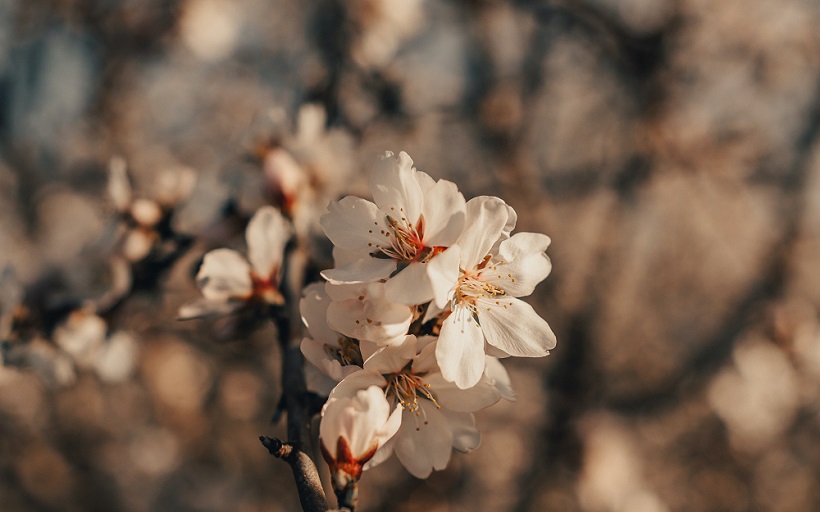Almond Trees Pollination

This post is also available in:
This post is also available in:
![]() Español (Spanish)
Español (Spanish) ![]() Français (French)
Français (French) ![]() Deutsch (German)
Deutsch (German) ![]() Nederlands (Dutch)
Nederlands (Dutch) ![]() العربية (Arabic)
العربية (Arabic) ![]() Türkçe (Turkish)
Türkçe (Turkish) ![]() 简体中文 (Chinese (Simplified))
简体中文 (Chinese (Simplified)) ![]() Italiano (Italian)
Italiano (Italian) ![]() Português (Portuguese (Brazil))
Português (Portuguese (Brazil)) ![]() polski (Polish)
polski (Polish)
How to pollinate Almond Trees
Most of popular almond varieties are not self-fertile; hence they need cross pollination in order to set fruits. In order to produce one almond, the almond tree needs theoretically just one granule of pollen of another compatible variety at the right time. Honeybee is the only insect that can facilitate the cross pollination of almond tree. All over the world, almond growers depend greatly on strong and healthy honeybee colonies, which ensure the best possible cross pollination. The almond grower must ensure that there is a big population of honeybees (2-3 strong colonies per acre or 5-7 per hectare) inside the almond orchard, so that a single bee will not only visit different flowers of the same tree, but will also transfer the pollen to other tree of different variety, which is normally located 20-30 feet (6-9 meters) away. Consequently, farmers often plant one row of trees of the pollinating variety for every three rows of the main variety. But when one pollinating variety cannot ensure satisfactory cross pollination, due to asynchronous flowering, it is recommended to use two pollinating varieties, an early flowering and a late flowering variety, so that the flowering of both will overlap with the flowering of the main variety.
The almond tree, depending on the variety, blooms from late winter to early spring (during February in US). The duration of flowering, depends greatly on the weather conditions and can range from 4 to 30 or more days (the average flowering period is 25 days). It is essential that the almond grower shall facilitate the cross pollination activity of bees by effectively eliminating all competing blooming weeds during the almond flowering period. Otherwise, bees will be distracted, they will also visit the blooming weeds and hence the cross pollination of almond trees will be significantly reduced.
Frequent rainfalls and cold weather during the flowering generally deteriorate the cross pollination activity of bees, resulting in decreased fruit set and production. In some cases, if the natural pollination of almond trees is inadequate, commercial almond growers may apply artificial pollination methods. However, nowadays artificial pollination methods have not been found to increase significantly the almond orchard yield.
You can enrich this article by leaving a comment or photo of your almond trees pollination methods.
2.) How to grow an Almond Tree from seed
3.) Growing Almond Trees for Profit
4.) Almond Tree Climate Requirements
5.) Almond Tree Soil Requirements & Preparation
7.) Almond Tree Pollination
8.) Planting Almond Trees – Number of Almonds Trees per hectare and acre
10.) Almond Tree Water Requirements
11.) Almond Tree Fertilization
12.) Almond Tree Harvest & Yield
13.) Almond Tree Pests and Diseases
Do you have experience in Almond Tree cultivation? Please share your experience, methods and practices in the comments below. All the content you add will be soon reviewed by our agronomists. Once approved, it will be added to Wikifarmer.com and it will influence positively thousands of new and experienced farmers across the world.









































































